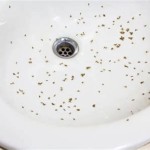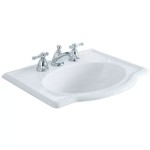How to Tile a Bathroom Floor Upstairs
Tiling a bathroom floor upstairs can be a daunting task, but with the right preparation and materials, it can be a rewarding home improvement project. Here's a step-by-step guide to help you through the process:
1. Preparation
Before you start tiling, it's essential to prepare the subfloor. Ensure it's level, clean, and dry. If the subfloor is uneven, use self-leveling compound to create a smooth surface. Clean the subfloor thoroughly to remove any dirt, dust, or debris that could interfere with the adhesive's bond.
2. Layout and Dry Fit
Once the subfloor is prepared, lay out the tiles to determine the best layout. Start by finding the center of the bathroom and work your way out. Dry fit the tiles without adhesive to ensure they fit correctly and create a pleasing design.
3. Apply Thinset
Spread thinset adhesive evenly over a small section of the subfloor using a notched trowel. Press the tiles into the thinset, ensuring they are level and aligned. Use a tapping block or a rubber mallet to secure the tiles.
4. Grout and Seal
Once the tiles are set, allow them to dry according to the thinset manufacturer's instructions. Mix grout according to the instructions and apply it to the joints between the tiles using a grout float. Use a sponge or damp cloth to remove excess grout and smooth the surface.
Allow the grout to dry completely before sealing it. Apply a penetrating sealer with a brush or roller to protect the grout from moisture and stains. Allow the sealer to dry thoroughly.
5. Install Baseboards and Caulk
Install baseboards around the perimeter of the bathroom floor to cover the expansion gap between the tiles and the wall. Caulk the joints between the baseboards and the floor to prevent water from seeping through.
Tips for Tiling Upstairs
- Use lightweight tiles to reduce the load on the upstairs floor.
- Reinforce the subfloor if necessary to prevent deflection.
- Stagger the tile joints to increase the strength of the installation.
- Protect the tiles during grouting and sealing by covering them with plastic or drop cloths.
- Allow ample time for the adhesive, grout, and sealer to dry before using the bathroom.
Conclusion
Tiling a bathroom floor upstairs requires careful preparation and precision. By following these steps and incorporating the tips provided, you can create a durable and aesthetically pleasing floor that will enhance the beauty and functionality of your bathroom.

Upstairs Bathroom Renovation Part 2 Stacy Risenmay

Tiling On Wooden Floors Part 1 Preparation Bathroom Guru

Tiling On Wooden Floors Part 1 Preparation Bathroom Guru

How To Tile A Bathroom Floor Wickes

Tiling On Wooden Floors Part 4 Overboarding Bathroom Guru
Preparing The Bathroom Floor For Tiling Blog Homeandawaywithlisa

Tiling On Wooden Floors Part 4 Overboarding Bathroom Guru

Tiling On Wooden Floors Part 4 Overboarding Bathroom Guru

Tiling On Upstairs Floor Boards Ie Now Ye Re Talkin

Upstairs Bathroom Renovation Part 2 Stacy Risenmay
Related Posts







